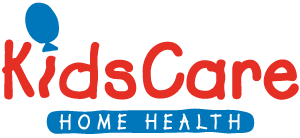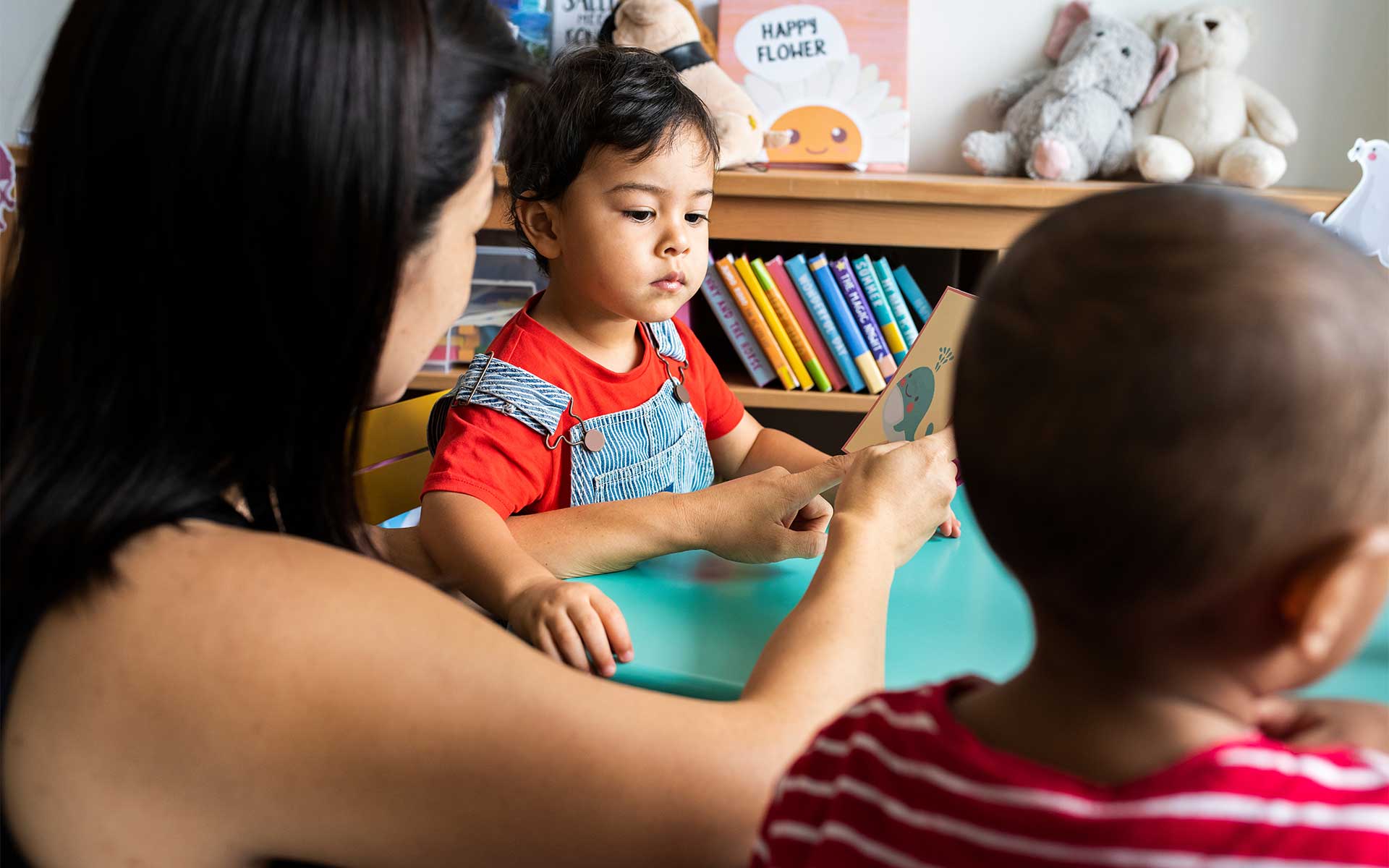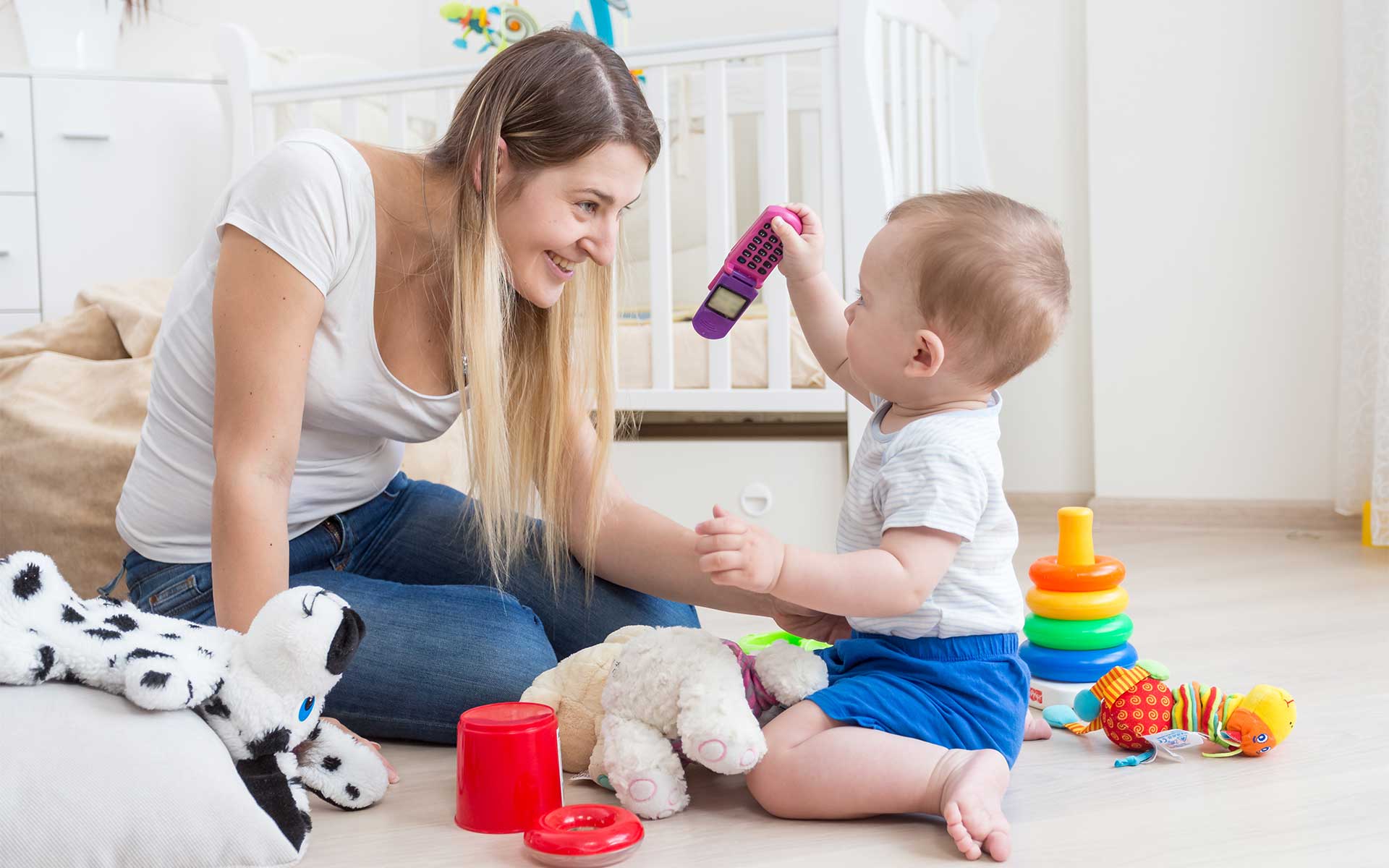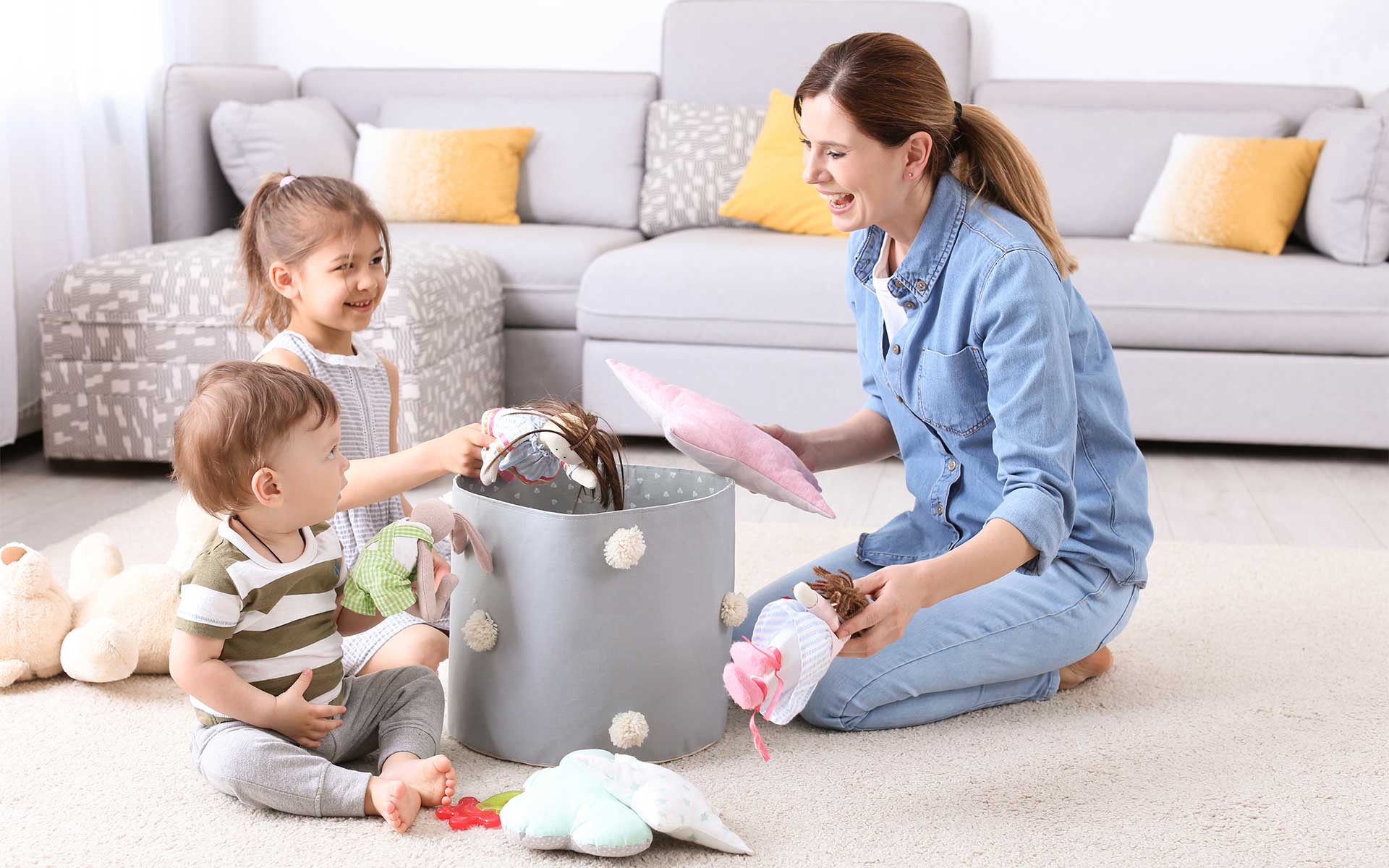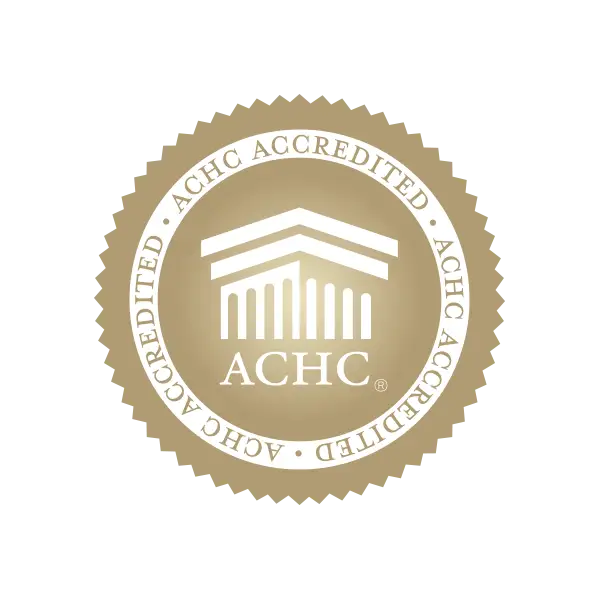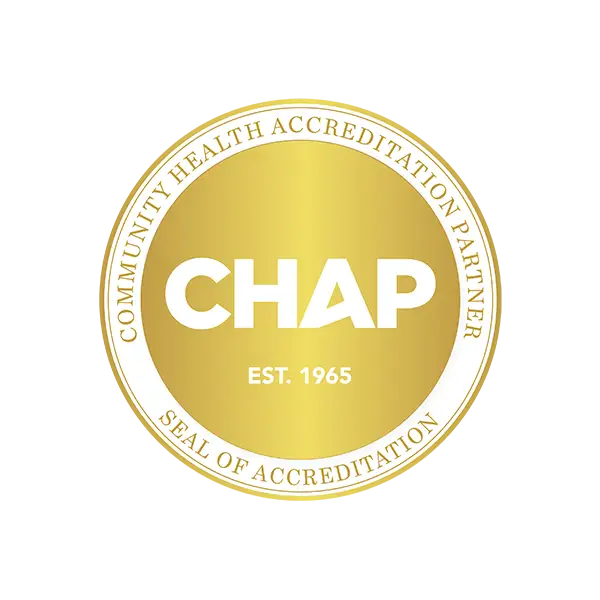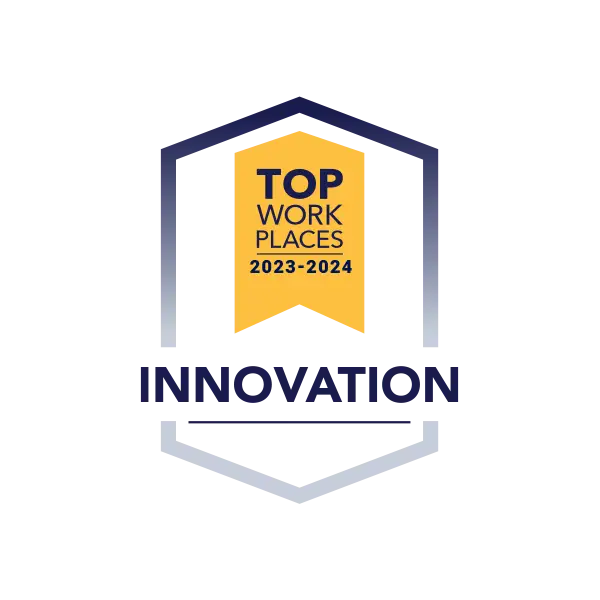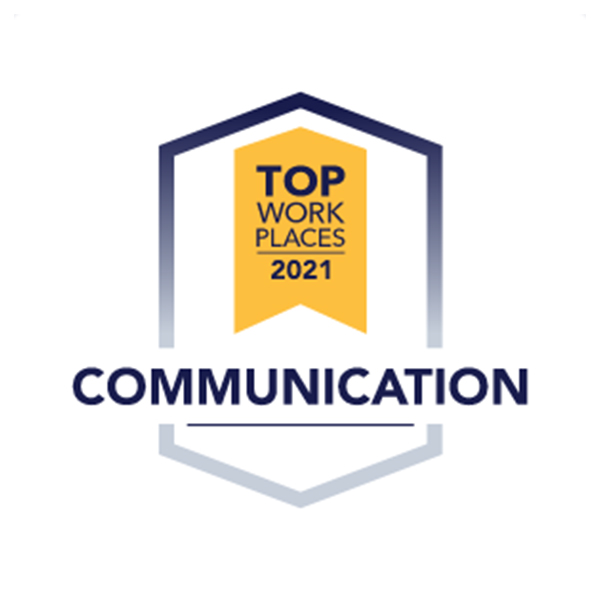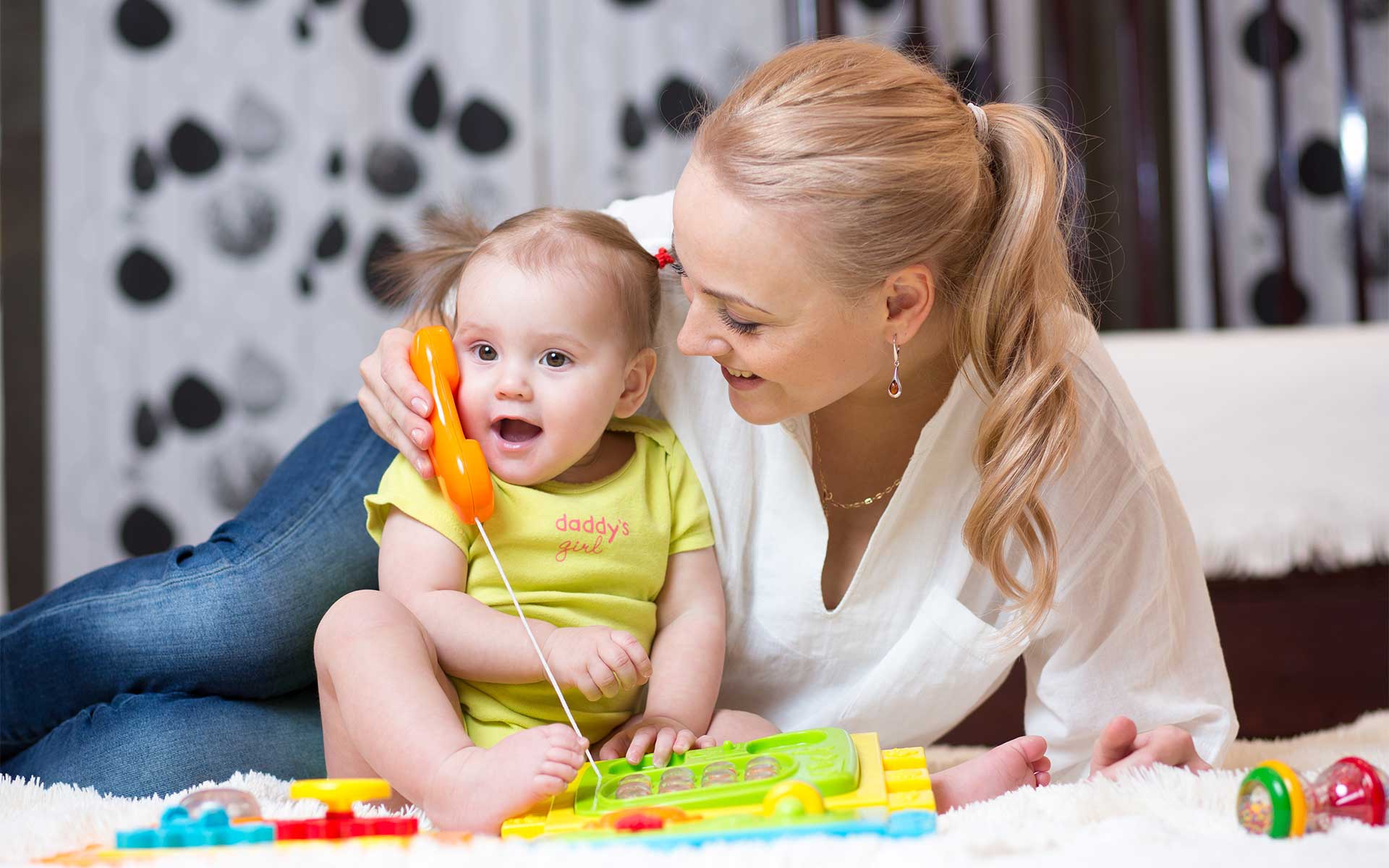
Babies are not born with the ability to form words, but that doesn’t mean their vocal cords aren’t getting a regular workout. Newborns are very busy from day one, letting parents and caregivers know attention is needed – generally with a cry. It takes time and patience to distinguish those cries and what they’re signaling until your baby begins using more distinct sounds to communicate.
Although many developmental milestones occur during infancy and toddlerhood, language development is constant for children in the early years. So, today’s post will thoroughly cover toddler language development expectations, including when it starts, why it’s important, and how parents and caregivers can help toddlers develop strong language skills for life.
When Do Children Start Talking?
We’ll kick things off with a common question from new parents: “when do children start talking?” Children begin the journey of language development with what we like to call blabbing, which is the term used to describe the repeated strings of consonant and vowel sounds babies make when they begin exploring communicating with sound and, eventually, words. Although blabbing doesn’t have any meaning, it’s an important stage in language development. Most parents can expect the blabbing to begin between 4 to 9 months old – as any sounds before that typically sound more like cooing.
Babbling is a warm-up for talking and an essential stage in language development in infants. When babies begin to babble, they are figuring out how to move their mouths in different ways to pronounce different sounds. As babbling progresses, parents can expect to hear a baby’s first real word or words between 10-14 months old.
Why Are Language and Literacy Activities for Infants and Toddlers Important in Early Development?
Every baby is a sponge in the first few years of life, and much of their learning happens through listening and watching. Early language development is vital to laying the foundations of communication and preparing our little ones for the big communication milestones that occur after talking, i.e., reading and writing.
Practicing early language development in infants and toddlers is recommended by pediatric health care professionals, and there are plenty of oral language development activities that parents and caregivers can practice to help the developmental process. However, before we describe the language development activities, let’s discuss parental behaviors to practice throughout the day to help babies learn how to develop oral communication skills.
How Can a Language Activity for Toddlers Help Them Develop Language Skills?
Interaction is critical to helping infants and toddlers learn the basics of speech communication. Language for toddlers is learned from their environment, so it’s appropriate to monitor your speech and associated behaviors accordingly. Following are our top tips for what to do and not do to help your little one develop early language skills through everyday interactions.
Don’t Use Baby Talk
Although it’s really easy to slip into “baby talk” when interacting with babies, it’s not very beneficial to their early language development. As little sponges, babies will mimic what’s around them, including how things sound. So if parents default to baby talk often, they run the risk of inadvertently teaching their infant or toddler similar speech patterns.
Talk About Things You Do
One of the best ways to introduce babies to verbal communication is by talking to them. They are watching and listening, so tell them what’s going on as often as possible. For example, talk about what you are doing as you do everyday activities with babies, such as changing a diaper, and simply describe every action with words. Babies may not understand what you are saying, but they are busy soaking up every sound and action through observation.
Name the Objects You Use & See
During your running commentary about everyday activities, be sure to name the objects you use and see. This is also critical to early language development by teaching infants and toddlers about the environment around them and the words we use to describe what we see. For example, during a diaper change, show your baby the diaper, call it by name, and talk about what you are doing with the diaper using descriptive words about the color, size, etc.
Actively Listen
Listening is an essential part of human communication, and we can teach this skill by practicing it with them often. Even if your infant is just babbling, make eye contact with them to indicate you hear their exciting noises.
As your toddler progresses past babbling and begins throwing out actual words, it’s more important than ever to show how you listen. Give them time to think of the right word for the situation and listen carefully. Make eye contact and repeat the word to demonstrate you understand. By actively listening, you send the message that what your child is saying is important to you – even if you can’t understand all of their words yet.
Language Classes for Toddlers
Many parents worry that going back to work will interfere with their toddlers learning trajectory. However, a skill every parent should learn early on is when to ask for help. It takes a village, after all! Language classes for toddlers offer excellent support for busy parents. The classes will help little ones’ early language development and support ongoing in-home language learning efforts.
Language Development Activities
Aside from the tips we described earlier, i.e., talking about the things you are doing and naming objects, there are plenty of language development activities you can practice daily to help your toddler flex their oral communication skills. Following are 16 of the best language development activities for toddlers. We’ll describe each in detail next, including how it helps the process.
Best 16 Literacy and Language Activities for Toddlers
These oral language development activities are easy, fun, and simple to incorporate into your daily routine. These language activities will encourage your child verbally or nonverbally communicate while developing skills in receptive language (understanding others) and expressive language (communicating to others).
Singing
Singing is a great strategy for promoting language development, and it can be your own original songs or singing along with the radio. There’s no right or wrong way to sing to your child – just do what feels natural and fun. If you like to listen to high-energy music while you clean or do other household chores, go for it – and sing along with the words. Hearing you sing is essential – even if your toddler cannot understand the song’s words. So, please don’t feel like you can only play children’s songs.
Puppets
Puppet shows are perfect for showing little ones how conversations look and sound in a fun and engaging way. Playing with puppets will help demonstrate how opening and moving the mouth makes sounds and great tools to illustrate how we talk to and answer each other with words in conversations or to simply describe what’s around us.
Dress-up
Dressing up is a form of imaginative play that encourages communication skills while increasing the bond between a parent and child. Playing dress-up is an opportunity to encourage language development by talking about what you are doing (ex: I’m zipping up this dress or tying this cape) while stimulating other cognitive, social, and emotional development skills.
Cooking
Cooking is an excellent way to introduce new words into your little one’s vocabulary. Where possible, let your toddler help with cooking and use the opportunity to explain what things are, what you are doing with them, and why.
Cleaning
Even though cleaning is not a fun adult activity, it can be a fun and interactive way to communicate with your toddler. Let them engage in cleaning activities and explain what tools are, how to use them, and why. Even if cleaning is just picking up your little one’s toys, do it with them and explain what you are doing, for example, “I’m putting this book in the basket. I’m closing the lid on the basket.”
Lego play
Lego play is fun, tactile, and an easy opportunity to have fun while describing shapes, colors, and numbers. Even if your toddler is too young to build complex structures – or anything resembling anything – playing with legos stimulates language and critical motor sensory skills while laying the foundation for future cognitive skills like problem-solving.
Walking
Walking with your infant or toddler is a great way to get them outside and exploring in nature. There are endless opportunities to talk about what you are hearing, seeing, and feeling/touching while out walking. Don’t rush the walk and take the time to talk to your toddler about what you see on the walk – it helps to get down on their level and engage them with eye contact throughout the walk.
Painting
Painting together with your toddler is another easy and fun language development activity. It’s a great opportunity to point out colors and shapes as you paint. The learning can also continue after the painting is complete. Talk to your toddler about the picture and write down what you see, like “blue” or “circle.”
Reading
Although children do not typically begin to read until after the toddler stage, reading to them is beneficial from day one of their little lives. As infants, your voice is soothing, and reading together is a bonding activity. However, as toddlers get a little older, they often develop specific interests – like dinosaurs, dogs, cars, babies, or cookies. You can nurture these interests by choosing books related to them, which helps little ones stay engaged and get the most from reading time.
Five Senses Play
Sensory play exercises are excellent language and communication activities for toddlers. You are stimulating and demonstrating how our five main senses, i.e., sight, touch, sound, smell, and taste, interact in all things. As you play, take the time to explain what your child is seeing, hearing, feeling, or touching. Sensory play can involve simple items found in and around the house, such as water, paper, pets, stuffed animals, etc.
Toy play
Toys can make anything fun! Use your toddler’s toys to create conversations between two characters, similar to puppet play – or simply describe the toy using your senses. What color is the toy? How does it feel (soft, smooth, etc.)? Does it make a sound?
Active Imagination
Active imagination or imaginative play allows your child to practice using new words in a fun and creative way. Using active imagination to create scenarios or activities to help toddlers with speech is flexible and fun. Engaging your toddler in imaginative play can look however you like. For example, do you remember going on a bear hunt? This popular imaginary game involved explaining the action (hunting for a bear) and how to find him (under the tree or over the fence).
Naming Emotions
Our little ones will experience human emotions without actually understanding what they are feeling. Giving those feelings a name as they manifest and explaining what they represent (sadness, fear, or happiness) is an excellent activity for promoting language development in infants and toddlers.
Rhyming
Dr. Seuss wrote, “The more that you read, the more things you will know. The more that you learn, the more places you’ll go.” Although his words and wisdom were significant, so was the rhyming. Many popular nursery rhymes incorporate rhyming words and actions to demonstrate what’s happening in the rhyme, such as Itsy Bitsy Spider and Hickory Dickery Dock.
Pretend Shopping
Pretend shopping or other forms of pretend play is engaging and fun for both participants. With pretend shopping, there are plenty of opportunities to narrate and demonstrate your activities, which both help stimulate early language development in toddlers. Many children’s museums have pretend shopping areas for children to nurture their curiosity, stimulate their senses, and encourage language learning.
Weather Talk
This may seem silly, but talking to your child about the weather is a great way to encourage early language development with curious little minds. For example, point it out to your toddler when it’s raining. Explain what rain is, what it does, and why it’s important. They may not understand everything you are saying at the moment, but you are laying a foundation for learning that will benefit them for years to come.
As you explore these language and communication activities for toddlers and infants, keep these pointers in mind to maximize the benefits of each. First, don’t quiz toddlers with questions. Rather, ask them open-ended questions, for example: “We cleaned up. What should we do next?” Also, if your toddler uses an incorrect word, gently repeat the sentence with the proper word or pronunciation instead of simply correcting the incorrect word.
You can also help expand their vocabulary by building on your toddler’s one or two-word statements. If your toddler points at a dog and says, “dog!” follow that up with “Yes, dog! What is he doing?” And finally, minimize screen time or make it interactive.
These engaging language and literacy activities for toddlers connect the body and mind with sensory-rich play and environments that stimulate and encourage early language development, laying the foundation for all the exciting learning and growing to come.
Toddler Speech Therapy
Although every child develops differently and at their own rate, speech development delays can occur, and these speech activities for toddlers can help. However, if you feel your child is experiencing a delay and want to know how to improve toddler speech through specialized therapy, please consult your pediatrician. They may recommend pediatric speech therapy to help your child progress.
If this is the case, KidsCare Home Health is available for in-home pediatric therapies nationwide. We specialize in nurturing, caring, and highly professional pediatric speech/language, occupational, and physical therapy services for families in the comfort and safety of their own homes. Contact us today!
